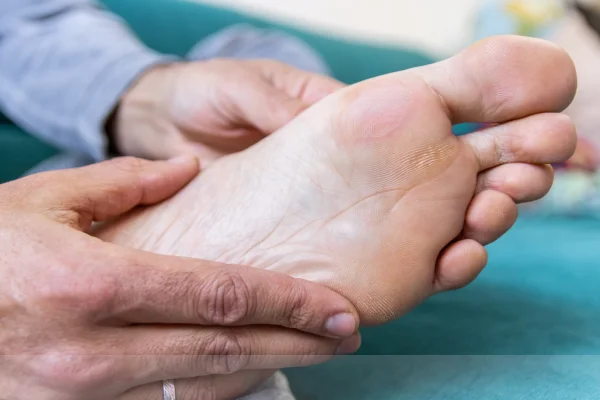Heel blisters are a common nuisance that can turn a simple walk or a run into a painful ordeal. We’ve all been there—new shoes, a bit too much friction, and suddenly you’re hobbling home with a blister. But don’t worry; preventing heel blisters is entirely possible with the right strategies and tips. This guide will walk you through everything you need to know to keep your heels happy and blister-free.
Heel blisters can be a real pain, both literally and figuratively. Whether you’re breaking in new shoes, running a marathon, or just going about your day, blisters can strike at the most inconvenient times. But with a few preventive measures, you can avoid these pesky problems and keep your feet feeling great.
Understanding Heel Blisters

Heel blisters are small pockets of fluid that form on the skin, typically due to friction, heat, and moisture. When your heel rubs against your shoe, it creates friction, which can cause the upper layers of skin to separate from the lower layers. This space fills with fluid, resulting in a blister.
Why Do Heel Blisters Form?
Blisters are your skin’s way of protecting itself from further damage. Think of them as a warning sign that something isn’t right—maybe your shoes are too tight, or perhaps you’re overdoing it with the exercise. Understanding why blisters form can help you prevent them in the future.
Choosing the Right Footwear
Importance of Proper Fit
Wearing shoes that fit correctly is crucial in preventing heel blisters. Shoes that are too tight can cause excessive friction, while shoes that are too loose can allow your foot to slide around, increasing the risk of blisters. Always try on shoes before purchasing and walk around to ensure they fit well.
Material Matters
The material of your shoes can also play a role in blister formation. Breathable materials like leather and mesh allow air to circulate, reducing moisture and heat build-up. Avoid shoes made of synthetic materials that don’t allow your feet to breathe.
Using Protective Gear
Specialized gear like blister pads, moleskin, and anti-friction balms can provide an extra layer of protection. These products reduce friction and provide cushioning, making them great for long walks, hikes, or runs.
Hygiene and Skincare
Keeping your feet clean and dry is essential. Moisture can soften your skin, making it more prone to blisters. Make sure to wash your feet regularly, dry them thoroughly, and apply a foot powder if necessary. Moisturizing your feet can also help keep the skin supple and less prone to cracking or blistering.
Prevention Tips for Athletes
Athletes are particularly susceptible to blisters due to the high levels of activity and sweat. Wearing moisture-wicking socks, using athletic tape, and ensuring proper footwear can make a significant difference. Also, consider breaking in new sports shoes gradually to avoid sudden friction increases.
What to Do When You Get a Blister
Despite your best efforts, sometimes blisters happen. If you get one, it’s important to take care of it properly. Clean the area with soap and water, and apply an antibiotic ointment. If the blister is painful, you can carefully drain it using a sterilized needle, but never remove the skin covering the blister, as it protects the underlying tissue.
When to See a Doctor
While most blisters heal on their own, some may require medical attention. If your blister is unusually large, painful, or shows signs of infection (like redness, warmth, or pus), it’s best to consult a doctor. They can provide appropriate treatment and prevent complications.
Conclusion
Heel blisters may seem like a small issue, but they can cause significant discomfort and even hinder your daily activities. By choosing the right footwear, using protective gear, and maintaining good foot hygiene, you can prevent most blisters. Remember, prevention is always better than cure, so take these steps to keep your feet blister-free and happy.
Frequently Asked Questions
1. How can I prevent blisters from forming in the first place?
Wearing well-fitted shoes, using moisture-wicking socks, and applying blister pads or anti-friction balms are effective ways to prevent blisters.
2. Can I pop a blister at home?
It’s generally best to leave blisters alone, but if you must, use a sterilized needle to drain it and avoid removing the overlying skin.
3. Are certain types of shoes more likely to cause blisters?
Shoes that don’t fit well, are made from non-breathable materials, or have rough seams can increase the risk of blisters.
4. Can blisters get infected?
Yes, blisters can become infected if not properly cared for. Look for signs like increased redness, warmth, or pus, and consult a doctor if needed.
5. Is it normal for athletes to get blisters?
Yes, athletes are more prone to blisters due to higher levels of activity and sweat. Using proper gear and gradually breaking in new shoes can help minimize the risk.

